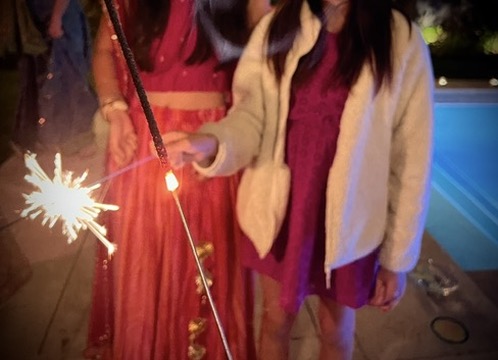On the first day of the new lunar year, I walked onto the Castilleja campus sporting my mother’s embroidered qipao, a traditional Chinese dress. I was soon greeted by Castilleja librarian Tasha Bergson-Michelson, who complimented my apparel. She began to lament, “I can’t believe I forgot to wear…”
Filling in the blanks, I replied, “…your qipao?”
“No, that’s not what I meant, and if I wore one I don’t think it would go over well.”
I was taken aback. Bergson-Michelson lived in China for part of her life, but she does not look Chinese. Something about this didn’t sit right with me. Wearing traditional clothing from another culture should not be grounds for immediate backlash.
Everybody agrees that cultural appropriation is an issue with lots of fine lines. An advice column in the New York Times stated that, “There is a difference between wearing a garment as a homage and sign of cultural appreciation and wearing it as a costume or because you think it looks cute.”
But is there really a difference between genuine cultural appreciation and just having fun? After all, cultural appreciation is fun. Castilleja math teacher Angela Price told my class about her cherished childhood kimono that her father brought her from Japan after having lived there for several years. Price commented on how, if not for her disdain for standing out, she would be wearing ball gowns and kimonos every day.
There is no difference between Price’s affinities for Japanese kimonos and Victorian-era ball gowns. Multiculturalism is common in fashion. For example, according to a CNN article, “Lolita” is “a style of dress popularized in Japan in the mid-1990s and informed by the Victorian era and ornate Rococo art movement.” Cultural appropriation causes harm because it perpetuates the power of a dominant culture. However, wearing something from another culture is not inherently wrong. University of Manchester anthropologist Theodoros Kyriakides writes, “Accusations of cultural appropriation are not directed to specific objects or symbols per se, but to the broader dimensions of meaning and political economy in which objects are embedded.” However, if this is true, what happens when the affected parties live in different political economies than us?
Last fall, when I told my mother about a Diwali party I was invited to, my mother reflected on her past. She had always been curious about the holiday and regretted never having bought a lehenga for herself. I was surprised about how frankly she spoke, but it made sense. My mother grew up in China, which according to China’s 2021 census, has a 91% ethnic majority. Just like many people from the cultures affected when people appropriate traditional Asian clothing, she never gained the same understanding of dominant cultures and cultural appropriation that we have in the United States.
After inquiring about the dress code for the Diwali celebration, a friend offered me a paper bag of traditional Indian clothing. When I arrived at the party, I was applauded for correctly fastening the dupatta to my shoulder, though I struggled to remember the bindi on my forehead and would often rub it off accidentally. People would agree that this was not cultural appropriation, since I was invited by my friend. However, is there a difference if I had worn a lehenga to school?
It is impossible to measure the exact harm that comes from a certain action, so accusations are based on the perceived harm. However, the context you have for wearing a certain piece of clothing is invisible to the average onlooker, making everybody just as susceptible to backlash. This backlash is the issue.
Kyriakides went on to write, “…of importance isn’t whether accusations of cultural appropriation are right or wrong, but the dynamics and interests out which accusations emerge.” The strictness around cultural appropriation is generally a good thing. A society that does not consider these nuances is either so racist that these concerns are not voiced, or so anti-racist that it isn’t a concern anymore. However, the latter is our ultimate goal. When it is possible to wear traditional clothing without perpetuating stereotypes or ignoring symbolic meaning, why do we allow the people who do it wrong to hold us back from doing it right?


